UPDATED OCT 1 2019
If you want to import a car or truck from the United States to Canada prepare yourself for lots of paperwork. It is not a difficult process but it does have a large number of steps that need to be completed in order. We try to make it as easy as A B C D:
A – PREWORK:
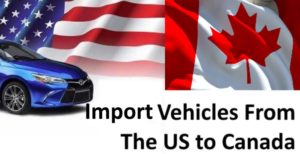 1 – Check Admissibility
1 – Check Admissibility
Before you do anything, you need to go through THIS list from Transport Canada and make sure the car/truck is admissible. These rules apply to vehicles that are less than 15 years old. Nearly all mass produced light duty passenger vehicles can be imported into Canada but some cannot, and there are some surprises here. For example, none of the following vehicles can be imported into Canada:
- Some Toyota Prius’, many Kia’s, all Lotus’, all Mercedes Black Series, Ford Saleen’s, some Ford Shelby’s
- Grey Market Vehicles – these are used cars and trucks imported to the US (from a country other than Canada). Don’t be surprised to find your exotic Ferrari or Lamborghini are grey market in the US and therefore inadmissible to Canada
- Kit Cars – Vehicles that were assembled from parts and not a major manufacturer like GM, Ford or Hyundai
- Salvage Vehicles – Cars and trucks that were ‘written off’ with severe damage can be imported into Canada but only for their parts. They cannot be registered/plated in Canada.
2 – Check For Required Modifications
Just because it is eligible to be imported does not mean that Transport Canada will not require you to make expensive modifications. All registered vehicles in Canada (that are newer than 15 years old) must have:
- Metric speedometer – does not have to be the primary/larger numbers but K’s/hour must be on it
- Daytime running lights
- Child restraint tether anchorage point locations
- French supplementary restraint system label for airbags that require periodic maintenance
- If the manufacture date is after September 1, 2007, it must be equipped with an ‘electronic immobilizer system’
Most vehicles have these items but not all. For instance, If your odometer only has MILES PER HOUR on it, you will REQUIRED to change it to one with KILOMETERS PER HOUR on it before it can be registered and plated.
3 – Use a Customs Broker?
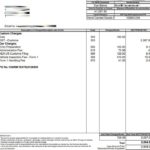 Before you get too involved in the avalanche of paperwork you should consider using a customs broker. I am very handy guy that is not intimidated by paperwork or effort but getting tied up in customs is never fun. I stumbled on a broker that would collect the fees (like GST/HST), do virtually all of the paperwork and guide me through the process for about $200 more than I could do it myself. My actual invoice is on the right side. This meant when I got to the border all of the fees had been paid and 95% of the paperwork was complete.
Before you get too involved in the avalanche of paperwork you should consider using a customs broker. I am very handy guy that is not intimidated by paperwork or effort but getting tied up in customs is never fun. I stumbled on a broker that would collect the fees (like GST/HST), do virtually all of the paperwork and guide me through the process for about $200 more than I could do it myself. My actual invoice is on the right side. This meant when I got to the border all of the fees had been paid and 95% of the paperwork was complete.
I have to think that using a broker gets through customs faster because the officers perceive you as a professional and don’t have to goof around explaining what the fields mean and what to do next.
In my case it was well worth a couple hundred dollars for all that paperwork, prepayments and guidance, but you will have to make your own decision.
B – INITIAL PAPERWORK
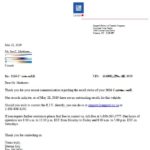 1 – Recall Clearance Letter
1 – Recall Clearance Letter
Contact the manufacturer and ask them to send you a “Recall Clearance”. This is nothing more than a few paragraphs on letterhead (not likely a form) that states the vehicle in question has no outstanding recall’s. This letter is valid for 30 days and most brokers will get this for you.
2 – Vehicle History Report
It is also a very good idea to buy a CarFax, or CarProof or AutoCheck or… to verify the vehicle history is clean. This is NOT required for importation but if the vehicle was a write-off/salvage/flood damaged it cannot be registered in Canada regardless of the repairs completed in the US, so you might want to check.
3 – Make Your Deal & Get Insurance
Once you are sure you can bring the vehicle into Canada, make your deal, get the purchase agreement (bill of sale) and contact your auto insurance company to arrange for temporary coverage.
The rules on this will vary depending on which Province you live in but most insurance companies require a copy of your bill of sale and ‘title’ document. That coverage is usually good for 14 to 30 days depending, again, on your Province.
See step C-1 below for what you need if the police pull you over.
4 – 72 Hour Requirement For Export From US & ITN Requirements
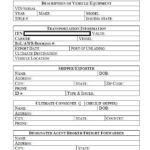 The United States now requires all US registered vehicles permanently leaving the US to be officially ‘exported’. Worse, they need paperwork from you 72 hours in advance, so you need to decide which port you are coming through well in advance. If you skip this step and get the vehicle registered in Canada, it will be seized (temporarily) by US Customs if it ever enters the US in the future so don’t skip this step.
The United States now requires all US registered vehicles permanently leaving the US to be officially ‘exported’. Worse, they need paperwork from you 72 hours in advance, so you need to decide which port you are coming through well in advance. If you skip this step and get the vehicle registered in Canada, it will be seized (temporarily) by US Customs if it ever enters the US in the future so don’t skip this step.
What they need is simple enough:
- The original Certificate of Title; Manufacturer’s Statement of Origin (MSO)
- A completed US Customs Vehicle Export worksheet including an ITN number (see below)
- An Invoice or Bill of Sale including the VIN or serial number
There are however, to ugly problems to get through:
- The US REQUIRES this paperwork to be electronically submitted to them 72 hours prior to your arrival at the border and they only process vehicle exports during specific hours. For instance, the Sumas Washington State / Abbotsford BC port will only handle exports from 8:00am to 3:30pm Monday to Friday. If you hit the border at 4:00 on Friday you will sit there until Monday… you have been warned.
. - The US CBP requires ITN (Internal Transit Number) which is difficult to obtain by yourself. Most people use a Licensed Importer and that will cost you between USD$100 and $200. There are many companies that will provide this service including Simplified Trade Solutions, BorderBuddy and AutoImportUSA. Usually they will need two business days to get the paperwork completed and sent to US Customs, which means you need to have a deal worked out with one of these companies 5 business days in advance of your arrival at the border.
I have found the US Customs process for exporting simple and professional. Shockingly, you can call most of the crossings and they will have a knowledgeable human CBP agent talk to you about their hours and procedures. I highly recommend you call them in advance to have a quick chat about your plans.
US CBP phone numbers and details are available here: cbp.gov/contact/ports
C – GET YOUR CAR / TRUCK THROUGH CUSTOMS
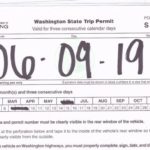 1 – Truck or Drive
1 – Truck or Drive
Either get your vehicle onto a car carrier / flat bed or drive it to the border.
If you are going to drive it to the border you need to have either temporary transit permit (temp license plate) or you need to put a non-expired Canadian license plate on it.
I chose to drive my mew car and I put my Alberta license plate on it. The rules will vary from Province to Province but in Alberta it is legal to use your existing active license plate on a vehicle you have just purchased for up to 14 days. If the police pulled me over, I would be required to provide:
- The bill of sale an/or title for the new car
- The registration for the car the matches the license plate (i.e. my former car)
- Valid insurance
My Alberta insurance company issued me a 30 day insurance slip on my US vehicle by simply providing them the bill of sale. In your Province the rules are likely similar, but you will need to contact your insurance company to work out the details.
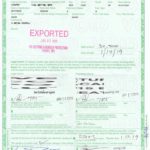 2 – Arrive At US Customs
2 – Arrive At US Customs
You must report to the CBP office with the vehicle on the US side of the border BEFORE you cross into Canada. The US CBP officer will give the vehicle a very quick visual inspection to confirm the VIN number and vehicle description matches what is on the paperwork.
They will ask for the original ‘Title’ (what Canadians would call ‘Registration’), stamp it with the word EXPORTED and hand it back to you.
Keep this and all paperwork as your Registry, ICBC, Service Ontario… will require it.
If all goes well, once you get to the US CBP office their process should be completed in about 30 minutes.
3 – Arrive at Canadian Customs
Drive through the border and park where the agent tells you to. In my case the Canadian Customs Officer “in the hut” checked my passport, asked a few common sense questions and handed me a small yellow slip they call a “referral”.
When you are parked, Officers may go through your vehicle but it is unlikely. They did not go through mine or any of a dozen other vehicles I saw being imported, but I did see them rip through a van.
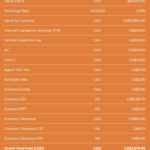 You then walk into the Canada Border Services Agency (CBSA) office, wait in line, then provide the officer with your referral slip and the bill of sale so he/she can convert the US dollars to Canadian dollars and charge you:
You then walk into the Canada Border Services Agency (CBSA) office, wait in line, then provide the officer with your referral slip and the bill of sale so he/she can convert the US dollars to Canadian dollars and charge you:
- GST/HST
- Air Conditioning Tax
- Vehicle Inspection Fee
- Customs Clearance Fee
- Form 1 Fee
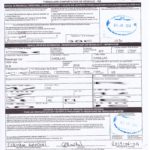 The form they use for this is a B3 (commercial use) or B15 (personal use) ‘Canada Customs Coding Form’ and you will need to keep a copy of this to get your vehicle registered in your Province, so don’t lose it.
The form they use for this is a B3 (commercial use) or B15 (personal use) ‘Canada Customs Coding Form’ and you will need to keep a copy of this to get your vehicle registered in your Province, so don’t lose it.
The example in orange to the right, shows the total fees that are to be paid to import a $30,000 car for personal use from the US to Alberta.
When they are done, you will receive a stamped FORM 1.
Make sure they stamp BOTH the top and bottom for form as shown on the right. A customs broker warned me about that Canadian Customs Officers often want to only stamp the top but if they do not also stamp the bottom you will need to return to customs to get it stamped before you can register your car in Canada. The officer I dealt with only stamped the top and was none-to-happy with my request for him to stamp the bottom. However, I am very glad I insisted because when I tried to register the car a few days later, I was told they have never seen a Form-1 without stamps on both the top and bottom.
4 – OPTIONAL – Customs Broker
All of the paperwork and payments can be made in advance if you use a customs broker. You need to hire them to create your ITN for US Customs so why not spend another $100ish to get all this stress and paperwork cleared up before you arrive.
Because I used a customs broker, a ll I had to do was visit the brokers office at the border, collect my paperwork, visit the customs officer, hand him all the paperwork and my yellow referral slip, wait 20 minutes, drive away.
D – GET YOUR VEHICLE REGISTERED IN CANADA
Now that you are free and clear in Canada, you and not free and clear… yet. You need to get your vehicle insured, inspected and registered.
1 – Out of Country & Out of Province Inspection
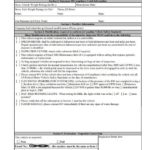 The Out of Country inspection request form was a bit of a problem for me. You need to take your stamped FORM 1 and submit it to REGISTRAR OF IMPORTED VEHICLES (aka RIV) site at riv.ca then wait a day or two for them to process it and send you the VEHICLE INSPECTION FORM you see on the right. This step can be handled by a customs broker and that is what I did.
The Out of Country inspection request form was a bit of a problem for me. You need to take your stamped FORM 1 and submit it to REGISTRAR OF IMPORTED VEHICLES (aka RIV) site at riv.ca then wait a day or two for them to process it and send you the VEHICLE INSPECTION FORM you see on the right. This step can be handled by a customs broker and that is what I did.
The process will vary from Province to Province but in Alberta I needed to visit my Registry first and pay a $10 fee for an Out of Province inspection form. They wanted my bill of sale, US title document and drivers license.
After trying several options including the largest GM dealer in Western Canada, I found that Canadian Tire was the only place that can provide Out of Country inspections. Fortunately, CanTire does not charge for that inspection beyond the collection of my Provincial ‘Tire Tax’ of a big $9/tire. I had them perform the Out of Province inspection at the same time at a cost of $180.
If you really don’t want to use Canadian Tire, a complete list of Out of Country Inspection locations are available at riv.ca/ImporterChecklist.aspx . Just click through the check list and STEP 3 provides a list of authorized inspection stations in your area.
After your Out of Country RIV VEHICLE INSPECTION FORM has been completed (by Canadian Tire) it needs to be faxed (yes, faxed like in 1985!) to RIV. If you use a customs broker they will likely want to do this for you, but in my case Canadian Tire faxed it in at no charge.
2 – Insurance, Registration & Plates
Call you insurance company and arrange for proper insurance.
Visit your Registry, ICBC, Service Ontario… to get your car registered in your Province. They will ask for:
- Drivers License
- Proof of Insurance
- Form 1 (must be stamped top and bottom)
- Form 2 (if applicable)
- Form B3 (commercial use) or B15 (personal use) ‘Canada Customs Coding Form’
- Original Bill of Sale / Invoice
- Original Title (hopefully with the word EXPORTED stamped on it)
In my case the Alberta registry charged me a big $25 to process this paperwork and transfer my license plate from old car to the new one. In other Provinces like BC, Ontario and Quebec, this same service will cost much more.
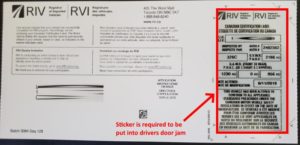 3 – RIV Sticker
3 – RIV Sticker
In a week or two you should receive a sticker from the Registrar of Imported Vehicles (RIV). That sticker is required to be placed on the drivers door jam.
That’s it. Happy driving!
FOR FURTHER READING:
If you are not out of your skull with details yet, check out these pages:
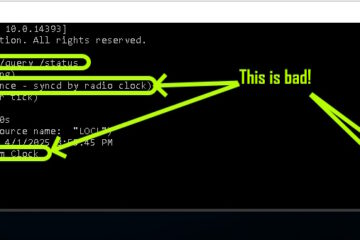
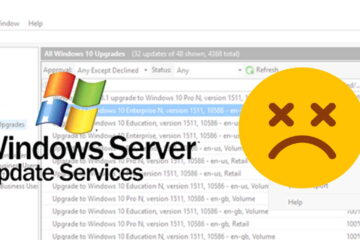
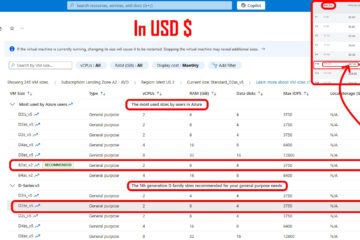
6 Comments
John · June 12, 2023 at 8:13 am
This is the most complete website I found on importing a vehicle into Canada from the US. I am in the process right now. I imported a vehicle 10 days ago and still cannot drive it in British Columbia. ICBC will not register and insure the vehicle until it has passed the inspections and mine (2020 Chevy Trax) doesn’t meet the Daytime Running Lights requirement. I have an appointment tomorrow at the local Chevy dealer for the modification which means I go to ICBC today to get a 24 hour Temporary Transfer Permit. Since this is my only vehicle each day of delay is an issue.
Abhinav Agrawal · June 11, 2020 at 11:53 am
Hi, This is great information. I have a question on using a Customs Broker services. Can I use the same broker for my ITN and getting my paperwork cleared i.e. one broker on the US side or another on Canadian side?
Ian Matthews · June 11, 2020 at 4:43 pm
Hi Abhinav;
Likely, most brokers operate in both the US and Canada
Rego · December 17, 2019 at 10:47 am
The vehicle must meet the requirements of all the following 5 departments:
Canada Border Services Agency
Transport Canada
Canadian Food Inspection Agency
Environment and Climate Change Canada
U.S. Customs Border Protection
Michel de Breyne · October 1, 2019 at 1:20 pm
You should correct several mistakes on your page:
– Most Teslas are now admissible (since late Aug 2019).
– Depending on the branding, salvage cars can be imported but they may need to be inspected in Canada. (Technically, all salvage branded vehicles can be imported but “non-repairable” or “flood” branded can only be imported as parts and can never be registered for road use. Other branding can be registered for road use).
– It is possible for Canadians for get an ITN. I’ve done it on a few occasions (3 times I believe).
Ian Matthews · October 1, 2019 at 2:36 pm
Hi Michel;
We have verified your first and second items and will take your word for the third. The page has been updated. Thanks for your help 🙂